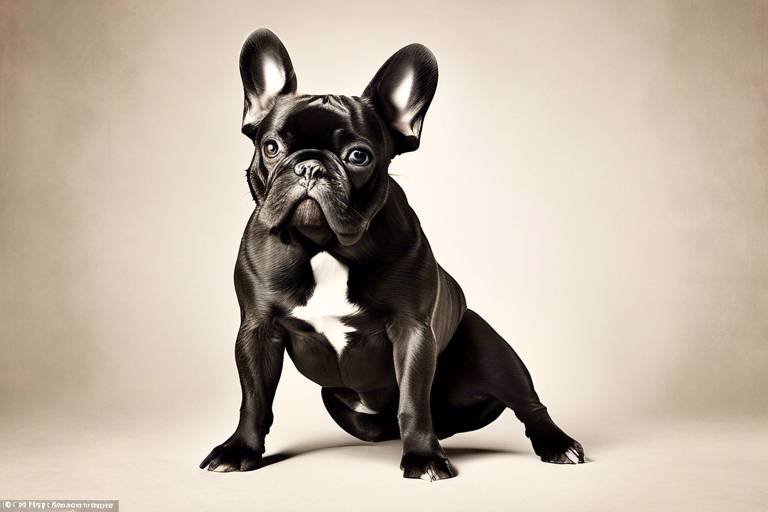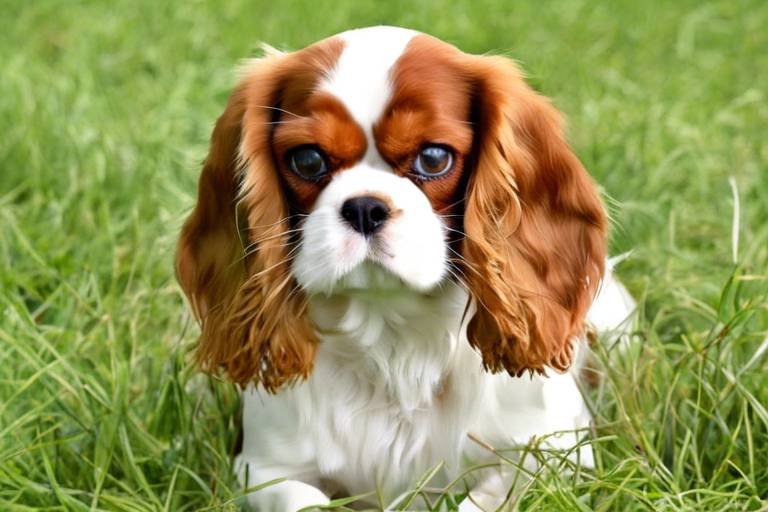How to Socialize Your Puppy - Breed-Specific Tips
Socializing your puppy is one of the most exciting and rewarding parts of dog ownership! It’s like opening a door to a world filled with new experiences, sights, and sounds that can help shape a confident and well-adjusted dog. But let’s be real, it’s not just about letting your pup run wild in the park. Socialization is a carefully crafted journey that requires your attention and understanding, especially when you consider the unique traits of different breeds. In this article, we'll dive deep into the art of puppy socialization, offering tailored tips that cater to your furry friend's specific breed. So, whether you have a playful Poodle or a determined Doberman, you’ll find the guidance you need to ensure your puppy grows into a happy and sociable adult dog.
Puppy socialization is crucial for developing a well-behaved dog. Think of it as the foundation of your pup's behavior. During their critical developmental period, which typically spans from 3 to 14 weeks of age, it’s essential to expose your puppy to a variety of environments, people, and other animals. This exposure helps them learn how to interact appropriately in different situations. Imagine teaching your puppy to navigate a bustling city street, a quiet park, or a crowded pet store—each experience builds their confidence and adaptability. Without proper socialization, your puppy may grow up to be fearful or aggressive, which can lead to behavioral issues down the road. So, let’s get those paws moving and start exploring!
Just like you wouldn’t use the same approach to train a cat and a dog, socialization needs can vary significantly between breeds. Each breed comes with its own set of traits and tendencies that can influence how you should socialize your puppy. For instance, working breeds like German Shepherds and Border Collies are often more energetic and require structured socialization to channel their enthusiasm positively. On the other hand, toy breeds such as Chihuahuas and Pomeranians may need a gentler touch to build their confidence. Understanding your puppy's breed traits is the first step in crafting a socialization plan that caters specifically to their needs. So, how do you assess these traits? It might involve some research, but trust me, it’s worth it for your pup’s well-being!
Working breeds often require structured socialization to channel their energy positively. Breeds like German Shepherds and Border Collies are not only intelligent but also highly trainable. They thrive on challenges, and if you don’t provide them with enough mental and physical stimulation, they might find their own ways to entertain themselves—which may not always be desirable! To socialize these breeds effectively, consider incorporating training sessions into your routine. This could include obedience classes, agility training, or even scent work. Not only does this provide the necessary structure, but it also promotes discipline while encouraging positive interactions with other dogs and people. Remember, a tired dog is a happy dog!
Implementing training techniques such as obedience classes can enhance socialization for working breeds. These classes not only teach your puppy basic commands but also expose them to other dogs and people in a controlled environment. Think of it as a puppy boot camp, where they can learn the ropes of socializing while having fun! Be sure to choose a class that emphasizes positive reinforcement, as this will help your puppy associate social interactions with good feelings. Moreover, practicing commands like “sit,” “stay,” and “come” can be incredibly useful during socialization outings, giving you tools to manage your puppy’s behavior effectively.
Supervised playtime with other dogs is essential for working breeds. It’s during these interactions that your puppy learns appropriate social behaviors through play. However, safety is paramount! Always ensure that playtime occurs in a controlled environment, whether it’s at a dog park or a friend’s backyard. Look for signs of stress or aggression in your puppy and be ready to intervene if necessary. Remember, the goal is to create positive experiences that reinforce good behavior. After all, who doesn’t love a good game of chase?
Toy breeds often require gentle socialization methods to build confidence. Smaller breeds like Chihuahuas and Pomeranians can be more sensitive to their surroundings, making gradual exposure crucial. When socializing these breeds, focus on positive reinforcement techniques, rewarding your puppy with treats and praise for calm behavior in new situations. Gradually introduce them to different environments, starting with quieter places and slowly progressing to busier areas as they become more comfortable. It’s like building a bridge of confidence—one step at a time!
Socializing puppies can present challenges, such as fear or aggression. It’s important to recognize that these issues are common and can be addressed with the right strategies. If your puppy shows signs of fear, such as cowering or hiding, it’s essential to take a step back and reassess the situation. Gradual desensitization techniques can help your puppy feel more secure in new environments. On the flip side, addressing aggression during socialization is crucial for safety. If your puppy displays aggressive behaviors, it’s vital to manage and correct these actions promptly. The goal is to ensure a positive experience for both your puppy and others.
Fearful behavior can hinder socialization efforts. Recognizing the signs of fear is the first step in helping your puppy overcome it. If your puppy is trembling, hiding, or barking excessively, it’s a clear indication that they’re feeling overwhelmed. Implementing gradual desensitization techniques, such as introducing them to new experiences slowly and rewarding them for bravery, can help build their confidence. Remember, patience is key! Celebrate small victories along the way, and soon enough, your puppy will be strutting their stuff with confidence!
Addressing aggression during socialization is crucial for safety. If your puppy displays aggressive behaviors, whether towards other dogs or people, it’s essential to intervene immediately. Start by identifying the triggers of your puppy’s aggression and work on desensitizing them to those stimuli. Techniques such as counter-conditioning can be effective—this involves changing your puppy’s emotional response to the trigger by pairing it with something positive, like treats or playtime. With consistent training and socialization, your puppy can learn to feel more comfortable and less reactive in social situations.
- When should I start socializing my puppy? - Ideally, you should start socializing your puppy as soon as you bring them home, ideally before they reach 14 weeks of age.
- How can I tell if my puppy is well-socialized? - A well-socialized puppy is typically confident, friendly, and comfortable in new environments, showing curiosity rather than fear.
- What if my puppy is fearful of other dogs? - Take it slow! Gradually expose your puppy to other dogs in controlled environments and reward calm behavior.
- Is it too late to socialize my older dog? - It's never too late! While it may take more time and patience, older dogs can still learn to socialize effectively.
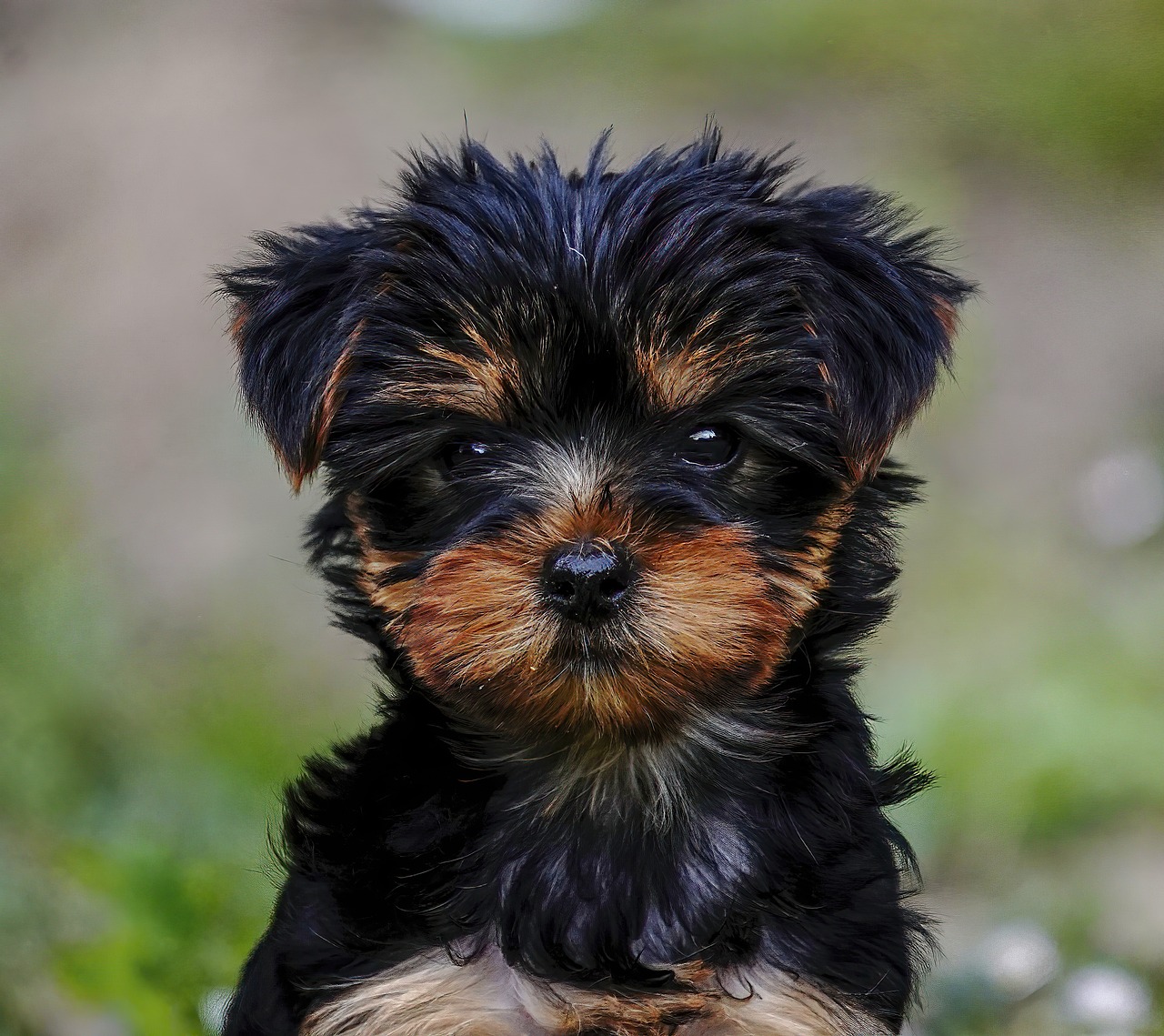
Understanding Puppy Socialization
Puppy socialization is a fundamental aspect of raising a happy and well-adjusted dog. Think of it as laying down the foundation for your puppy's future behavior. Just like we humans learn to navigate our world by interacting with different people and experiences, puppies thrive when exposed to a variety of environments, sounds, sights, and smells. This exposure is especially critical during their critical developmental period, which typically spans from 3 to 14 weeks of age. During this time, a puppy's brain is like a sponge, soaking up everything around them, and it’s our job as pet owners to ensure that what they absorb is positive and enriching.
Imagine your puppy as a tiny explorer, eager to discover the world but needing a trusty guide. When you introduce them to new experiences, you’re not just helping them become more confident; you’re also preventing behavioral issues that can arise from fear or anxiety later in life. For instance, a well-socialized puppy is less likely to develop aggression towards other dogs or people because they’ve learned through positive interactions that the world is a friendly place.
So, what does effective socialization look like? It involves a variety of interactions, including:
- Meeting different people, including children and seniors
- Encountering various animals, from dogs to cats
- Exploring different environments, such as parks, busy streets, and pet-friendly stores
- Experiencing various sounds, like traffic, fireworks, and household appliances
Each of these experiences helps your puppy build a mental library of what to expect from the world. The key is to make these experiences positive. Use treats, praise, and play to create a rewarding atmosphere during these introductions. Remember, the goal is to make your puppy feel secure and happy in their surroundings.
However, it’s crucial to approach socialization with care. Overwhelming your puppy with too many new experiences at once can lead to stress and anxiety. Instead, aim for gradual exposure. Start with quieter environments and less intimidating situations, and as your puppy becomes more comfortable, gradually increase the complexity of their experiences.
In summary, puppy socialization is not just a box to check off on your to-do list; it’s an ongoing journey that shapes your puppy’s personality and behavior. By investing time and effort into socializing your puppy, you’re setting them up for a lifetime of happiness and good behavior. So grab those treats, head out the door, and start exploring the world together!
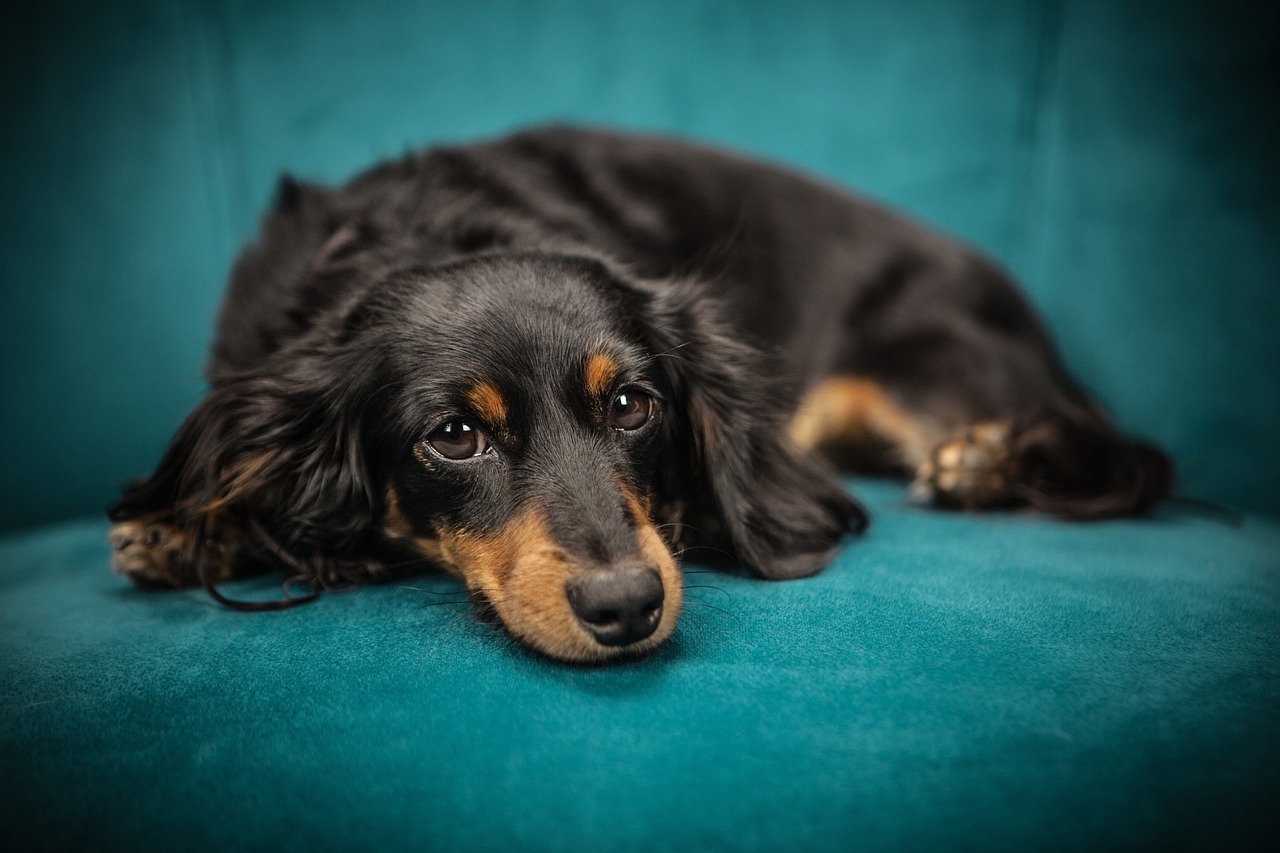
Breed-Specific Needs
When it comes to socializing your puppy, understanding their breed-specific needs is like having a treasure map that leads you to a well-adjusted and happy dog. Just like humans, dogs have their own personalities and quirks, which are often influenced by their breed. Some breeds are naturally more outgoing and eager to socialize, while others may be more reserved or even shy. This is why it’s essential to tailor your socialization techniques to fit your puppy’s unique traits.
For instance, a Golden Retriever is typically friendly and loves meeting new people and dogs. Their socialization process can be more relaxed, allowing them to interact freely in various settings. On the other hand, a Shiba Inu might require a more cautious approach due to their independent nature. They may need gradual exposure to new experiences to build confidence and comfort.
To effectively assess your puppy’s breed traits, consider the following factors:
- Temperament: Is your puppy more playful or reserved? Understanding their natural disposition can help you create a socialization plan that aligns with their personality.
- Energy Level: High-energy breeds like Border Collies need more vigorous socialization activities, while low-energy breeds may benefit from calmer interactions.
- Size: Smaller breeds, such as Pomeranians, may require gentler handling and exposure to prevent overwhelming them.
Moreover, recognizing the critical developmental stages in your puppy's life is vital. The first few months are crucial for socialization, and during this time, exposing them to different environments, people, and other animals can make a significant difference in their behavior as adults. For example, puppies that are well-socialized early on are less likely to develop behavioral issues like fear or aggression later.
It's also important to remember that socialization is not a one-time event but an ongoing process. As your puppy grows, their socialization needs may change. Regularly revisiting socialization opportunities and adjusting your approach based on their comfort level will help ensure they remain well-adjusted throughout their life.
In summary, understanding your puppy's breed-specific needs is essential for effective socialization. By paying attention to their temperament, energy levels, and developmental stages, you can create a tailored socialization strategy that fosters a confident and well-behaved dog. So, whether your puppy is a playful Labrador or a spirited Dachshund, embracing their unique traits will lead to a happier, more social canine companion.
Working Breeds
When it comes to socializing , understanding their unique needs is paramount. Breeds like German Shepherds and Border Collies are known for their high energy levels, intelligence, and strong work ethic. These traits make them exceptional companions, but they also require a structured approach to socialization. Imagine trying to contain a whirlwind—without proper guidance, their energy can become overwhelming, both for them and for you! So, how do you channel this energy positively?
First and foremost, structured socialization is key. This means providing your puppy with a variety of experiences in a controlled manner. Think of it as building their social toolbox. You want to expose them to different environments, people, and animals, but in a way that feels safe and manageable. Regular visits to dog parks, obedience classes, and even community events can serve as excellent opportunities for socialization. Each interaction is like adding a new tool to their toolbox, preparing them for the world ahead.
Additionally, training techniques play a crucial role in socializing working breeds. Enrolling your puppy in obedience classes not only teaches them basic commands but also enhances their ability to interact positively with other dogs and people. It’s like giving them a roadmap for navigating social situations. For example, teaching commands such as “sit,” “stay,” and “come” can help you manage their behavior during social outings, ensuring that they remain calm and focused.
Here’s a quick overview of effective training techniques:
| Training Technique | Description |
|---|---|
| Positive Reinforcement | Rewarding good behavior with treats or praise to encourage repetition. |
| Socialization Classes | Structured environments where puppies can interact with other dogs and people under supervision. |
| Exposure to New Environments | Gradually introducing your puppy to different settings to reduce anxiety. |
Moreover, playtime interactions are essential for working breeds. Supervised play with other dogs allows them to learn appropriate social behaviors through the natural process of play. Think of it as a puppy’s version of a team-building exercise! However, it’s crucial to ensure that these interactions occur in a safe, controlled environment. Look for dog parks or playgroups that cater to the size and temperament of your puppy, ensuring that they have positive experiences with their peers.
In summary, socializing working breeds requires a blend of structured training, positive reinforcement, and ample opportunities for safe play. By providing your puppy with the right tools and experiences, you set the stage for them to grow into a well-adjusted, confident adult dog. Remember, the goal is not just to socialize your puppy but to help them thrive in various situations, making their journey—and yours—much more enjoyable.
Training Techniques
When it comes to socializing working breeds like German Shepherds and Border Collies, effective training techniques are paramount. These breeds are not just bundles of energy; they are intelligent and eager to learn, which makes them perfect candidates for structured training programs. Think of training as the foundation of a house; without it, everything else can crumble. By implementing a variety of training techniques, you can not only enhance your puppy's socialization experience but also foster a strong bond between you and your furry friend.
One of the most beneficial methods is enrolling your puppy in obedience classes. These classes provide a controlled environment where your puppy can learn basic commands while interacting with other dogs and people. It’s like a social club where everyone is learning the ropes together! Here, your pup will encounter various distractions, which is crucial for building confidence and focus. Moreover, having a professional trainer guide you through the process can make a world of difference. They can offer insights tailored to your breed's specific needs, ensuring that your training is both effective and enjoyable.
In addition to obedience classes, incorporating positive reinforcement techniques is essential. Rewarding your puppy with treats, praise, or playtime whenever they exhibit desired behaviors encourages them to repeat those actions. For example, if your German Shepherd approaches another dog calmly, shower them with affection and a tasty treat. This method not only reinforces good behavior but also helps your puppy associate social interactions with positive outcomes. Remember, patience is key; it may take time for your pup to adjust, but consistency will lead to success.
Another technique worth considering is clicker training. This method uses a distinct sound to mark a desired behavior, followed by a reward. The clicker serves as a bridge between the action and the reward, making it clear to your puppy what they did right. It’s particularly effective for working breeds that thrive on mental stimulation. You can start by clicking and rewarding your puppy for simple commands like “sit” or “stay,” gradually increasing the complexity as they become more comfortable.
Furthermore, socialization outings are a fantastic way to reinforce training in real-world scenarios. Take your puppy to a dog park, pet-friendly stores, or even on walks around the neighborhood. Exposing them to various situations—different people, sounds, and environments—helps them learn how to behave appropriately in diverse settings. Just like us, dogs learn best through experience, and these outings can be both fun and educational.
To wrap it up, training techniques are essential for socializing working breeds effectively. Remember to be patient and consistent, and always focus on positive reinforcement. Your efforts will not only help your puppy become a well-adjusted adult dog but will also strengthen your bond, making the journey together even more rewarding. So gear up, grab those treats, and get ready for some fun training sessions!
- How early should I start socializing my puppy? It's best to start socializing your puppy as early as 8 weeks old, during their critical developmental period.
- What if my puppy is fearful of other dogs? Gradual desensitization is key. Start with controlled interactions and reward positive behavior.
- Are obedience classes necessary for all breeds? While not mandatory, they greatly benefit most breeds, especially working breeds, by providing structure and socialization.
- How can I tell if my puppy is ready for a dog park? Look for signs of confidence, such as curiosity and calmness around other dogs. If they're fearful or aggressive, it may be best to wait.
Playtime Interactions
When it comes to socializing your puppy, are not just fun and games; they are a crucial part of your puppy's development. Think of playtime as a social boot camp where your furry friend learns the ropes of interacting with other dogs and people. It's during these playful moments that puppies pick up on important social cues, learn to share, and develop their communication skills. Imagine a puppy at a playground, discovering how to navigate friendships, much like a child learning to play with others.
However, it’s essential to ensure that these interactions are supervised and controlled. Not all play is created equal, and some environments can lead to overwhelming experiences for your pup. You want to create a safe space where your puppy can frolic freely but still be guided by your presence. This means choosing the right location—preferably a fenced area where your puppy can explore without the risk of running off. A dog park can be an excellent option, but it's important to assess the other dogs present to ensure they are friendly and well-socialized.
During playtime, pay attention to your puppy's body language. Are they wagging their tail and inviting others to join in, or are they cowering and trying to hide? Recognizing these signals is vital. If your puppy seems overwhelmed, it’s perfectly fine to step in and remove them from the situation. After all, socialization is about building confidence, not creating anxiety. As your puppy becomes more comfortable, you can gradually introduce them to larger groups or different environments.
Another important aspect of playtime is to encourage positive interactions. Use toys to facilitate play, as they can help break the ice between shy puppies. For instance, toss a ball to initiate a game of fetch, which can draw in other dogs and create a fun, engaging atmosphere. Additionally, positive reinforcement is key; reward your puppy with treats or praise when they exhibit friendly behavior. This way, they associate social interactions with good experiences, which will encourage them to be more open in the future.
Consider organizing playdates with other puppies or friendly adult dogs. These smaller, controlled interactions can be less intimidating and allow for more focused learning. Just like humans, dogs learn best through practice, and these playdates can provide the perfect opportunity for your puppy to hone their social skills.
In conclusion, playtime interactions are a vital part of your puppy's socialization journey. By creating safe, supervised environments and encouraging positive behaviors, you can help your puppy grow into a well-adjusted and confident adult dog. Remember, every interaction is a learning opportunity, so embrace the playful moments and watch your puppy flourish!
- How often should I socialize my puppy?
Regular socialization is key. Aim for daily interactions with people and other dogs, especially during the critical socialization period (up to 16 weeks). - What if my puppy is fearful during playtime?
If your puppy shows fear, take a step back. Gradually introduce them to new experiences and provide comfort and reassurance. - Can I socialize my puppy with older dogs?
Yes, older dogs can be great socialization partners. Just ensure that the older dog is friendly and patient. - What are signs of good play behavior?
Look for signs like a wagging tail, play bows, and relaxed body language. These indicate that your puppy is enjoying themselves.
Toy Breeds
Toy breeds, such as Chihuahuas, Pomeranians, and Yorkshire Terriers, are often characterized by their small size and big personalities. When it comes to socialization, these pint-sized pups require a unique approach to help them build confidence and adapt to their environment. Unlike larger breeds, toy breeds may be more prone to fear and anxiety, which makes gentle and positive socialization methods essential. Think of it like introducing a shy child to a new classroom; a calm and supportive environment can work wonders!
One effective strategy for socializing toy breeds is to use positive reinforcement. This means rewarding your puppy with treats, praise, or playtime every time they successfully engage with a new person or another dog. By creating positive associations, your puppy will begin to feel more comfortable in various situations. For instance, if your Chihuahua meets a new friend and receives a treat afterward, they’ll start to look forward to those encounters instead of dreading them.
Gradual exposure is another crucial element in socializing toy breeds. Start by introducing your puppy to a variety of environments, such as parks, pet stores, and even your friend's house. Each outing should be brief and enjoyable. Over time, as your puppy becomes more accustomed to these experiences, you can gradually increase the duration and complexity of the situations. Remember, it's all about building their confidence step by step!
| Socialization Tips for Toy Breeds | Description |
|---|---|
| Positive Reinforcement | Reward your puppy for positive interactions to build confidence. |
| Gradual Exposure | Introduce your puppy to new environments slowly to minimize stress. |
| Controlled Playdates | Arrange playdates with well-mannered dogs to encourage social skills. |
| Short Outings | Keep socialization sessions short and sweet to prevent overwhelming your puppy. |
Additionally, controlled playdates with well-mannered dogs can significantly aid in the socialization process. Choose dogs that are calm and friendly, allowing your toy breed to interact without feeling intimidated. Supervised playtime can teach them appropriate social cues and behaviors. Just like humans, dogs learn a lot through observation and interaction!
Lastly, don’t forget to monitor your puppy’s body language. Signs of stress or fear, such as cowering, tail tucking, or excessive barking, indicate that your puppy may need a break or a different approach. Always prioritize your puppy’s comfort and well-being, and remember that socialization is a journey, not a race. With patience and persistence, your toy breed will grow into a confident and sociable companion.
- How early should I start socializing my toy breed? It's best to begin socialization as early as possible, ideally between 3 to 14 weeks of age, when they are most receptive to new experiences.
- What if my puppy shows fear during socialization? If your puppy shows signs of fear, take a step back and allow them to observe from a distance. Gradually decrease the distance as they become more comfortable.
- Are there specific training classes for toy breeds? Yes, many training centers offer classes specifically designed for small breeds, focusing on their unique needs and challenges.
- Can I socialize my puppy with larger dogs? Yes, but always supervise interactions and ensure the larger dog is gentle and well-behaved to avoid overwhelming your toy breed.
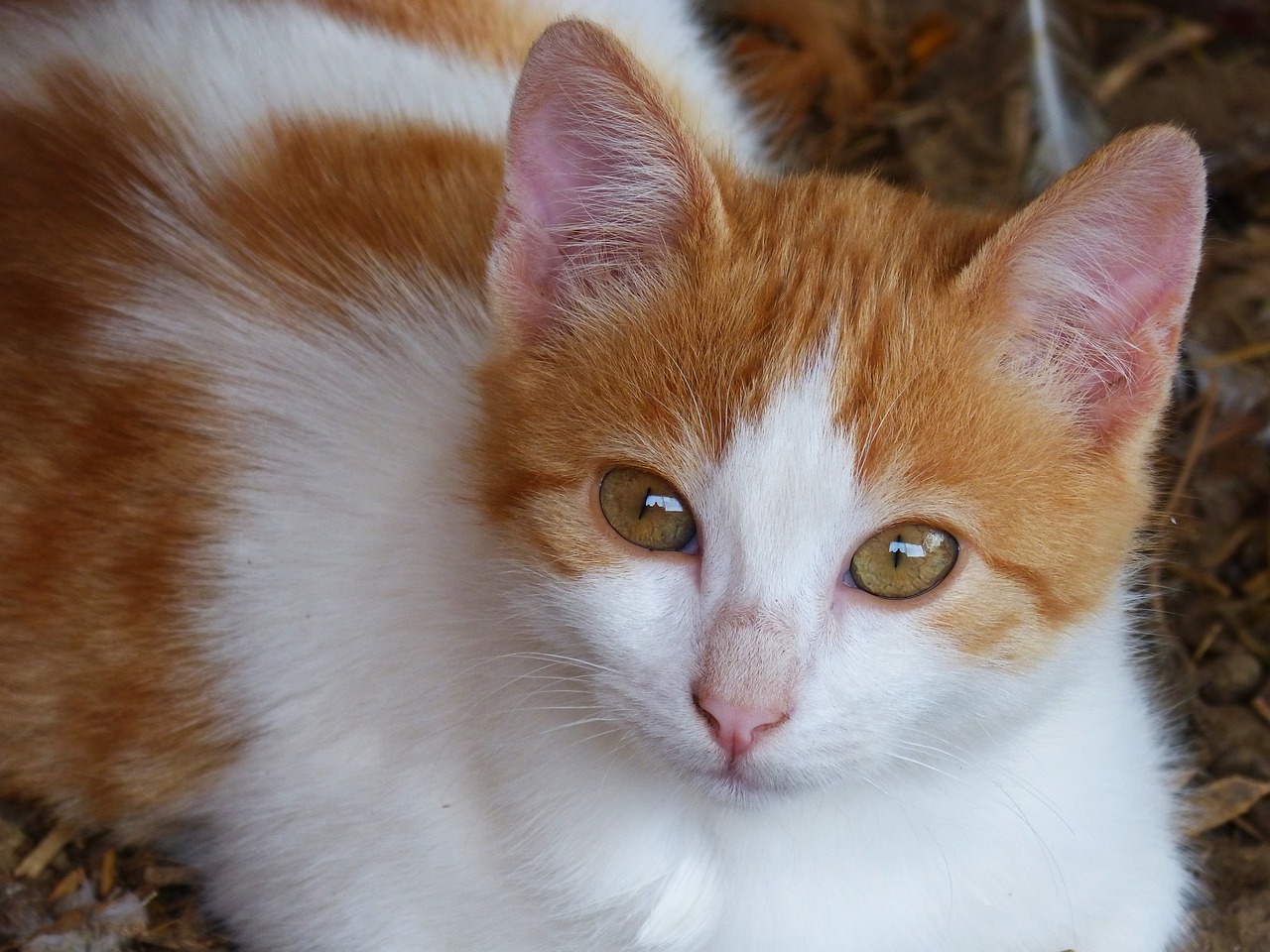
Common Socialization Challenges
Socializing your puppy can feel like navigating a minefield at times. It's not always smooth sailing, and sometimes, you might encounter challenges that can throw you off course. Two of the most common issues are fearful behavior and aggression. Understanding these challenges is the first step to overcoming them, ensuring that your puppy grows into a well-adjusted adult dog.
Fearful behavior in puppies can manifest in various ways, such as cowering, hiding, or barking excessively when faced with new experiences. This isn't just a phase; it can significantly hinder their ability to socialize effectively. Recognizing the signs of fear is crucial. For instance, if your puppy tucks its tail between its legs or avoids eye contact, these are clear indicators of fear. To combat this, you can implement gradual desensitization techniques. Start by exposing your puppy to new environments or people in small, manageable doses. For example, if your puppy is scared of strangers, introduce them slowly, allowing your pup to approach at its own pace. This way, your puppy can build confidence without feeling overwhelmed.
On the flip side, aggression can be a significant hurdle during the socialization process. It's essential to address aggressive behaviors promptly to ensure the safety of your puppy and others around them. Common triggers for aggression include fear, territorial instincts, or even frustration. If your puppy growls or snaps at other dogs or people, it’s crucial to take a step back and assess the situation. The best approach here is to create a positive reinforcement strategy. Reward your puppy for calm behavior around others, and gradually increase their exposure to different stimuli. This can help them learn that new experiences don’t have to be threatening. Remember, patience is key. Every puppy is unique, and some may take longer to adjust than others.
To summarize, socializing your puppy is a journey filled with ups and downs. By understanding the common challenges of fearful behavior and aggression, you can take proactive steps to ensure your puppy develops into a confident and well-mannered dog. Don’t hesitate to seek professional help if you find these challenges overwhelming. A qualified trainer can provide tailored strategies that suit your puppy’s specific needs, helping you navigate the socialization process more effectively.
- What should I do if my puppy is afraid of other dogs?
Gradually introduce your puppy to other dogs in controlled environments. Use positive reinforcement to reward calm behavior, and don't rush the process. - How can I tell if my puppy is aggressive or just playing?
Watch for body language; playful dogs typically have a relaxed posture, while aggressive dogs may display stiff bodies, growling, or lunging. - Is it normal for puppies to be scared of new experiences?
Yes, it is common for puppies to be fearful of new situations. Consistent exposure and positive reinforcement can help them build confidence.
Fearful Behavior
Fearful behavior in puppies can be a significant barrier to successful socialization. It's essential to recognize that just like humans, puppies have their own personalities and sensitivities. Some may be naturally more timid, while others are bold and adventurous. If your puppy exhibits fearful behavior, it’s crucial to address it with patience and understanding. Ignoring these signs can lead to long-term anxiety issues, making it difficult for your furry friend to enjoy life to the fullest.
So, how can you identify fearful behavior in your puppy? Look for signs such as:
- Tail tucked between the legs
- Excessive whining or barking
- Refusal to engage in play
- Hiding or cowering in corners
- Urinating submissively
Recognizing these signs is the first step in helping your puppy build confidence. Once you’ve identified fearful behavior, the next step is to implement gradual desensitization techniques. This approach involves exposing your puppy to the things that scare them in a controlled and positive manner. For example, if your puppy is afraid of strangers, start by introducing them to calm, friendly people in a quiet environment. Gradually increase the level of exposure as your puppy becomes more comfortable.
Another effective strategy is to use positive reinforcement. Whenever your puppy displays brave behavior, such as approaching a new person or exploring a new environment, reward them with treats or praise. This reinforces their courage and helps them associate new experiences with positive outcomes. Remember, the goal is to create a safe space where your puppy feels secure enough to explore the world without fear.
Additionally, consider enrolling your puppy in a socialization class designed for fearful dogs. These classes often provide a controlled environment where puppies can learn to interact with others at their own pace. With the guidance of a professional trainer, your puppy can gradually learn to overcome their fears, making the process less overwhelming.
In summary, addressing fearful behavior in puppies requires a combination of observation, patience, and positive reinforcement. By taking small steps and celebrating your puppy's victories, you can help them navigate their fears and grow into a confident, well-adjusted adult dog.
Q: How can I tell if my puppy is fearful?
A: Look for signs such as a tucked tail, excessive whining, or hiding. These behaviors indicate that your puppy may be scared or anxious.
Q: What should I do if my puppy is afraid of other dogs?
A: Start with controlled introductions to calm dogs, rewarding your puppy for positive interactions. Gradually increase exposure as they become more comfortable.
Q: Is it okay to force my puppy into situations that scare them?
A: No, forcing your puppy can increase their fear and anxiety. Instead, use gradual desensitization techniques to help them feel safe.
Q: How long does it take for a fearful puppy to become more confident?
A: Every puppy is different, and the timeline can vary. Consistent training and positive reinforcement can lead to improvements over weeks or months.
Aggression Issues
Aggression in puppies can be a daunting challenge for pet owners, but understanding its roots is the first step toward effective management. Puppies may exhibit aggressive behaviors for various reasons, including fear, territorial instincts, or even a lack of proper socialization. Recognizing these triggers is essential for addressing the issue before it escalates. Think of aggression as a warning signal—your puppy is trying to communicate something that needs attention.
One of the most common forms of aggression in puppies is fear-based aggression. This occurs when a puppy feels threatened and reacts defensively. It's crucial to identify the signs of fear, which can range from growling and barking to more subtle cues like cowering or avoiding eye contact. If your puppy displays any of these behaviors, it's essential to approach the situation with patience and care. Gradual desensitization is a technique that can help; it involves slowly introducing your puppy to the fear-inducing stimulus in a controlled manner, allowing them to adjust without feeling overwhelmed.
On the other hand, territorial aggression can manifest when a puppy feels the need to protect their home or family. This behavior can often be seen when strangers approach the house or when other dogs invade their space. To manage territorial aggression, it's important to create a secure environment where your puppy feels safe. Training your puppy to respond to commands such as "sit" or "stay" can help redirect their focus during potentially triggering situations.
Another effective strategy for managing aggression is to implement positive reinforcement techniques. Rewarding your puppy for calm behavior with treats or praise can reinforce good habits and reduce aggressive tendencies. For instance, if your puppy remains calm when a visitor arrives, offer them a treat as a reward. Over time, this can help them associate new people or situations with positive experiences.
In some cases, professional guidance may be necessary. Consulting a certified dog trainer or a behaviorist can provide tailored strategies to address your puppy's specific aggression issues. They can help you develop a comprehensive training plan that includes socialization exercises and behavior modification techniques.
To summarize, managing aggression in puppies involves:
- Identifying triggers and understanding the underlying causes.
- Implementing gradual desensitization techniques.
- Using positive reinforcement to encourage calm behavior.
- Seeking professional help when necessary.
By addressing aggression early on and employing the right strategies, you can help your puppy grow into a well-adjusted and confident dog. Remember, the goal is to foster a positive relationship between your puppy and their environment, ensuring they feel secure and happy.
Q: What are some signs that my puppy may be aggressive?
A: Signs of aggression can include growling, barking, snapping, or a stiff body posture. It's important to observe your puppy's behavior closely to identify any potential issues.
Q: How can I prevent aggression in my puppy?
A: Early socialization is key. Expose your puppy to various environments, people, and other animals to help them develop confidence and reduce the likelihood of aggressive behavior.
Q: Should I punish my puppy for aggressive behavior?
A: Punishment can often escalate aggressive behavior. Instead, focus on positive reinforcement and redirecting their attention to more appropriate behaviors.
Q: When should I seek professional help for my puppy's aggression?
A: If your puppy's aggression is severe or if you're unsure how to handle it, it's best to consult a professional dog trainer or behaviorist for guidance.
Frequently Asked Questions
- What is puppy socialization and why is it important?
Puppy socialization is the process of exposing your puppy to various environments, people, and other animals. It's essential because it helps your puppy develop confidence and reduces the likelihood of behavioral issues later in life. Think of it as giving your puppy a passport to the world, helping them navigate through different experiences safely.
- How do I socialize my puppy if they are fearful?
If your puppy shows signs of fear, take it slow. Gradual desensitization is key. Start by introducing them to new experiences in a controlled manner, allowing them to explore at their own pace. Use treats and positive reinforcement to create a positive association with new situations. Remember, patience is your best friend here!
- What are some breed-specific socialization tips?
Different breeds have unique needs. For instance, working breeds like German Shepherds thrive on structured socialization and training, while toy breeds like Chihuahuas may require gentler methods. Tailoring your approach based on your puppy's breed traits can make a significant difference in their social development.
- Can I use playtime as a socialization tool?
Absolutely! Supervised playtime with other dogs is a fantastic way for puppies to learn social cues and appropriate behaviors. Just ensure the environment is safe and controlled, allowing your puppy to interact and play without feeling overwhelmed.
- What should I do if my puppy shows aggression during socialization?
Addressing aggression is crucial for a positive socialization experience. Start by identifying triggers and managing the environment to avoid confrontations. Gradual exposure and positive reinforcement can help redirect aggressive behavior. If needed, consider seeking help from a professional dog trainer.
- How long should I spend socializing my puppy each day?
Consistency is key! Aim for short, positive socialization sessions daily. Even 10-15 minutes can be effective if done regularly. The goal is to create enjoyable experiences that encourage your puppy to engage with the world around them.
- Is it too late to socialize my older dog?
While it's ideal to socialize puppies during their critical developmental period, older dogs can still learn! It may take more time and patience, but with gradual exposure and positive reinforcement, your older dog can adapt to new experiences and environments.




